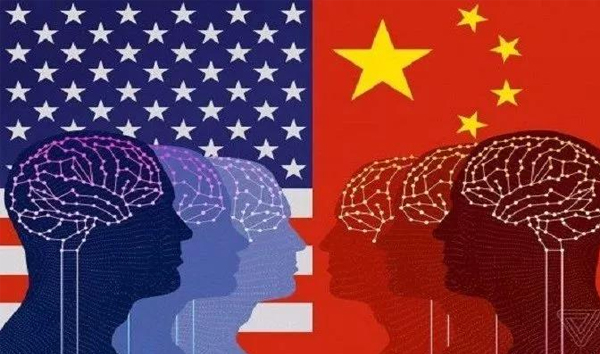
Original published by South China Morning Post on May 6, 2019. All rights reserved
Embroiled in a trade war with China, the Trump administration, in February, signed an executive order aiming to spur the development of artificial intelligence, in response to the rising fear in academia and government that the US is losing the race for global AI leadership to China.
Such fears are not entirely unfounded. China has a well-funded commitment to the development of AI. The leadership in Beijing has outlined its ambitions in various development plans, including the initiative to build “advanced manufacturing”. According to Tsinghua University’s China AI development report, released last year, China has secured a leading position in the AI echelon in both technology development and market applications. China ranked first in the total number of AI research papers and AI-related patents, and second in terms of the size of its AI talent pool.
There are several key drivers of China’s progress. First, it enjoys a fundamental system advantage. In the past four decades since its “reform and opening up”, China has somewhat unconsciously evolved its own “three-layer duality” development model. At the top, the central government’s guiding hand sets goals and directions for the country, giving the rest of the nation clear targets to follow. At the grass-roots level, private-sector entrepreneurs have re-emerged and become a major force in driving economic growth.

In the spirit of driving the development of advanced manufacturing, provinces and cities across China have instituted preferential policies for AI start-ups. For example, Tianjin, a major port city in the northeast, launched a US$16 billion fund last year to bolster the local AI industry. Tech companies collaborate with local governments on AI initiatives such as smart city, health care and autonomous driving. Alibaba’s ET City Brain project uses AI to tackle traffic jams, reducing traffic delays by 15.3 per cent in parts of Hangzhou, the city in which Alibaba is headquartered.
Second, the massive size of the Chinese economy allows companies, especially AI companies, to rapidly scale up. China now boasts more than 800 million internet users, roughly 58 per cent of its total population and three times larger than the number in the US. According to the China Internet Network Information Centre, 98 per cent of them are mobile internet users. The large online population generates an abundance of data, on which algorithms can conduct large-scale research and experiments much faster and more intensely than is possible in the West.
For better or worse, Chinese are more relaxed about data privacy than Westerners, at least for now. What may be viewed as a violation of privacy by some could be advantageous for AI developers wanting to extract a large amount of data. This situation allows Chinese AI developers to achieve more accurate machine learning models in areas such as facial recognition, voice and gesture recognition, consumer behaviour analysis and robotics process automation.
Third, a “why not me” mindset drives Chinese entrepreneurs, who are eager to show that they too could succeed. Today, younger entrepreneurs view their successful predecessors as role models and want to replicate their success. China’s hypercompetitive environment harbours cutthroat commercial activities and transformative business models, allowing the fruits of AI to quickly spread across the economy.
China tops the list of the number of active AI companies and venture capital investment. Leading players, such as Baidu, Alibaba and Tencent, are investing heavily in AI technology. For example, in 2018, Tencent invested about US$120 million in Shenzhen-based humanoid robot designer UBTECH Robotics. Baidu not only poured US$1.5 billion into its Apollo Fund for autonomous driving, but has also developed a neural-network-based machine translation system that has at times achieved speech recognition accuracy higher than that of humans.
Rising start-ups, on the other hand, have created tremendous value. Among those is the previously mentioned UBTECH Robotics, the world’s highest-valued AI start-up at US$5 billion. ByteDance, the company behind AI-powered news and information content platform Toutiao and popular short video platform TikTok, has grown 230 per cent in revenue in the past two years.

While the Chinese tend to favour applications of existing technologies, the West focuses more on the science and infrastructure behind AI. Fundamental research is high-hanging fruit that would take much more time and risk to achieve results than commercial applications.
However, there are signs that this is also beginning to change. The Chinese government is planning support for AI education, research and development. One of the newer projects, the Next Generation Artificial Intelligence Development Plan, offers a forward-looking blueprint for basic theory and common key technologies. Another project on brain science and brain-inspired research is comparable to Europe’s Human Brain Project and the US’ BRAIN Initiative. Inevitably, some of these technological experiments will fail but others will make it. It is through experimentation that progress can be made.
Should we simply focus on the winner of the “race” between China and the US? “Race” implies a zero-sum game, as if the two countries must treat each other as “strategic competitors” and acknowledge a mutual threat. While there is competition, there is also plenty on which to collaborate. In today’s increasingly interconnected world, we need organisational means to address issues that transcend national borders, including those of AI development and governance.
Some level of collaboration in AI among American and Chinese researchers is already under way. For example, the Partnership on AI, an organisation founded by Amazon, Google, Facebook and others, announced last year that Baidu would join its network. The consortium of companies recognised the importance of global discussion around the future of AI and showed a desire to counter the arms-race narrative. There is a need for China and the US to focus more on similarities and common goals for the betterment of the entire world.
Picture Source | Google

